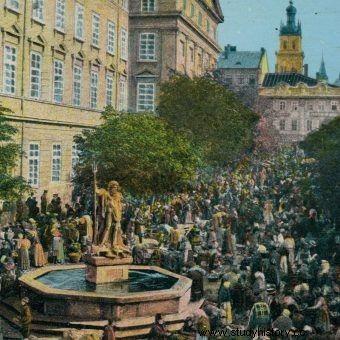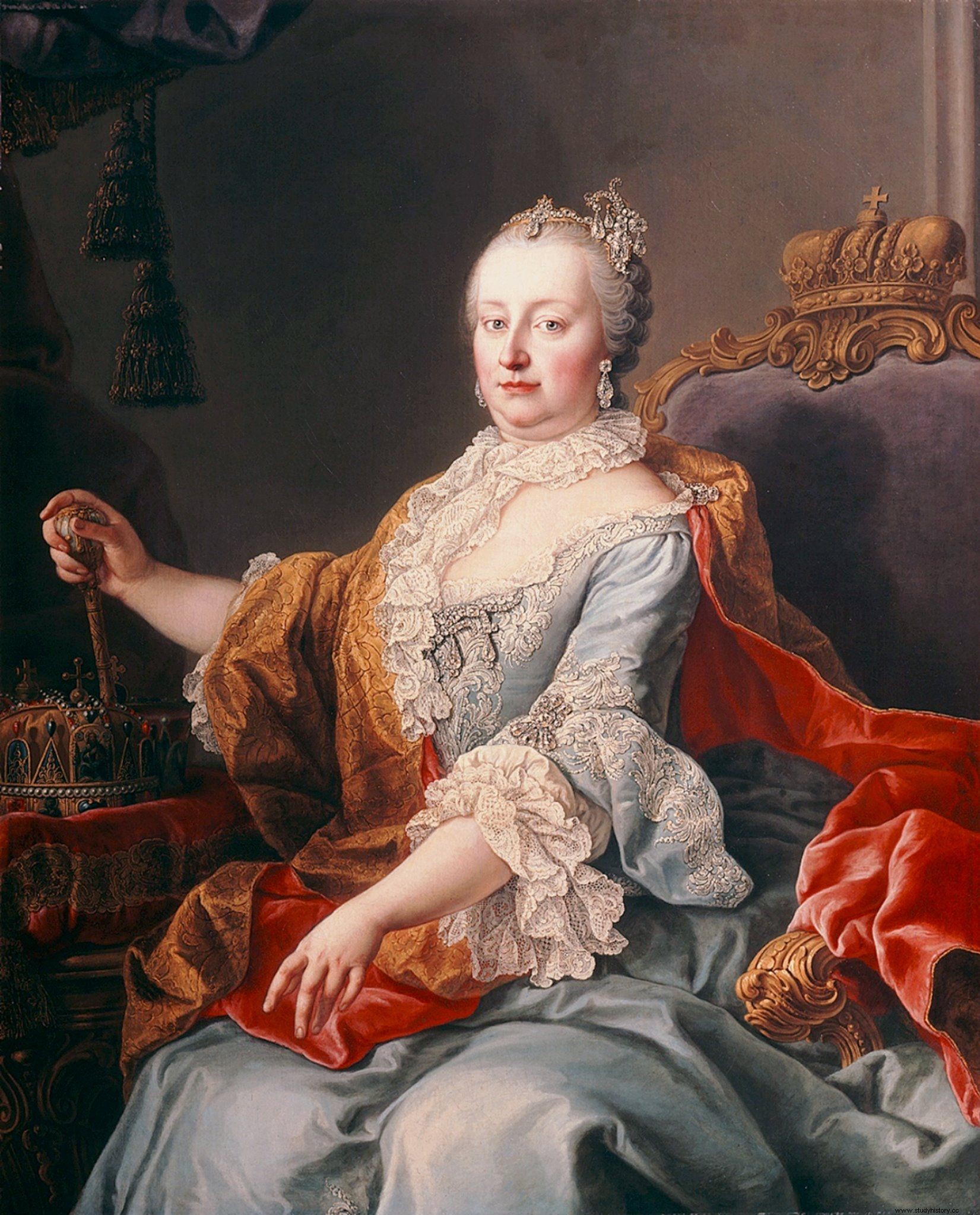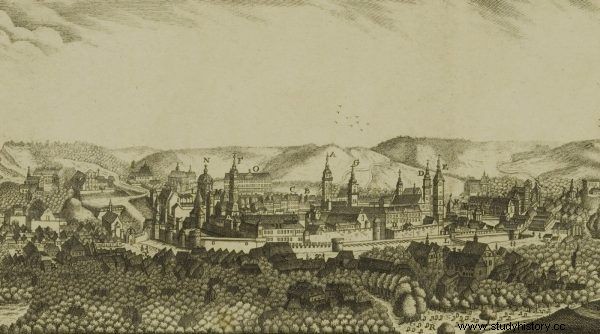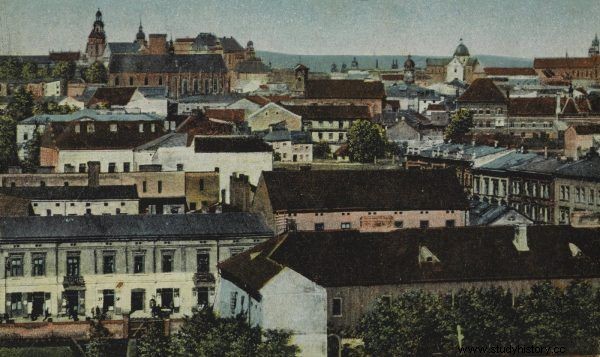Due to the partitions, Lviv grew to the rank of the truest capital. The inconspicuous, off-the-beaten-track city has experienced an incredible promotion. What was the reason for this surprising decision?
To the question:"Which city was the capital of Galicia and Lodomeria?" most readers of Historical Curiosities would certainly have given the correct answer:Lviv. The more pressing issue, however, seems to be why this happened? Why is it not Krakow, but 300 kilometers to the east, the center that became the capital of the Habsburg province? Who made the decision that determined the development and status of both cities in the 19th century?
A sudden twist from the empress
The search for the right answer must begin at the Viennese court, sometime in the middle of the eighteenth century. Although Maria Teresa, the daughter of Emperor Charles VI of Habsburg, was remembered by history as a strong Enlightenment ruler who was not afraid of bold changes, the beginnings of her reign were not easy. Many neighboring monarchs willingly questioned her right to rule in particular lands.

Why is Lviv the capital of Galicia and Lodomeria? The illustration shows the Lviv Market Square in a postcard from the end of the 19th century.
She never officially crowned herself Empress, although she titled herself, inter alia, Queen of Hungary, Bohemia, Galicia and Lodomeria, and Archduchess of Burgundy, Styria, Carinthia and the Land . She attached great importance to the modernization of the state in the style of the Enlightenment, but also did not avoid territorial wars. The apple of her eye was the rich Silesia, lost earlier, so distant from the lands of the Commonwealth at that time.
It seemed that Poland, weakening from year to year, did not have to expect any threat from it. The more so because Maria Teresa became credible in the eyes of Polish patriots, giving shelter to the generals of the Bar Confederation in Upper Hungary (today's Slovakia). Until the unfortunate year 1772 came. The background of these tragic events for Poles is outlined in the book “Lwów. A Portrait of a Lost City ”Lutz C. Kleveman:
Poland's powerful neighbors - Prussia, Russia and Austria - took advantage of its weakness and divided the country's territory among themselves in three stages. As a result of the first partition (...), the south of the Polish Republic fell to the Habsburgs. Although this act of brutal great-power politics caused Empress Maria Theresa with moral remorse, she did not fail to take up new areas. If she hadn't done it herself, as she probably told herself, the Russians or the Prussians would have done it.
According to the legend, the empress wept bitterly when signing the partition treaty . Perhaps she remembered that less than a hundred years earlier it was the Poles who helped defend Vienna against the Turkish invasion? Was the decision to partition really a choice of the lesser evil? Or maybe just the finale of a well-planned campaign?
False repentance?
Historical facts undermine Vienna's good intentions. As early as 1699, the Austrians had no qualms about taking over 13 towns and 16 villages from the Spiš starosty. A year later, they took a larger piece of the cake, devouring part of the land of Czorsztyn, Nowy Targ and Nowy Sącz. Let us also return to the above-mentioned title - already during her coronation as Queen of Hungary in 1741 Maria Teresa also adopted the exotic sounding title of Queen of Galicia and Lodomeria.
Where did her claims come from? Well, Halicz and Włodzimierz Wołyński, which later became part of the new "kingdom", belonged for some time to the crown of Saint Stephen. Later, until the eighteenth century, both castles were within the borders of the Polish-Lithuanian Commonwealth. Then they lost their importance and became insignificant towns. It seems, however, that already in the 1840s, the empress was preparing for a possible takeover of this part of Poland - and these centers became her starting points.

Maria Teresa first gave shelter to the Bar Confederation, and then took part in the first partition of Poland.
And since even the most unjustified annexation can be explained both legally and propaganda, in 1772 the Austrians were prepared. They published an exceptionally bloated document, compiled by lawyers and scientists, titled "An excerpt preceding the rights of the Hungarian Crown to Red Ruthenia and Podolia, as the Czech Crown to the Duchy of Oświęcim and Zator".
Thus, Maria Teresa cleared her conscience, and the first partition became a fact. Interestingly, the newly established Kingdom of Galicia and Lodomeria was never directly attached to the kingdom of Hungary. It functioned as an independent unit under the rule of the Habsburgs. Lviv was chosen as its capital. Why?
Poor competition
Although on the maps depicting the first partition of Poland, the achievements of Austria look very modest, it was quite a large piece of land. We are talking about 83 thousand square kilometers, inhabited by over 2.5 million people. However, there was no metropolis in all this area.

Lviv, as the largest city in Galicia and Lodomeria, had no competition after the first partition. The illustration shows a view of the city from the beginning of the 19th century.
Lviv, called Lemberg after the act of partition, was simply the largest, most important and the most thriving center among all the areas located in the areas taken over by the Habsburgs . According to Professor Stanisław Grodziski, his only competition at that time was Przemyśl.
Although Lviv was slightly more distant from the center of the empire, it clearly outperformed its rival economically. Only this center was able to bear the burden of undertaking a large administration. Other cities in the region - Jarosław, Brody, Bełz, Tarnów and Sanok - were simply too small. Just like Halicz and Włodzimierz Wołyński, which at that time had only a few thousand inhabitants.
What about Krakow?
Of course, Krakow could become a worthy competitor of Lviv. The problem is that after the first partition of Poland in 1772, the capital of Małopolska remained within the borders of the Polish Republic, plunged in crisis. Austrian troops entered it only in January 1796 .
After the third partition, the area of Galicia increased significantly. A new entity was created, commonly known as "New Galicia" or "Western Galicia" and Krakow became its official capital. It was even thought about officially dividing the region into two separate administrative entities. It turned out, however, that the former seat of Polish rulers was not able to cope with the administrative obligations. As a result, Lviv's position as the capital and the main center of the Kingdom of Galicia and Lodomeria was consolidated. And it was like that until 1918.

Krakow had to settle for being the capital of Western Galicia.
The new administrative realities had a huge impact on the development of both largest Galician cities. The Austrian authorities, already under the reign of the new emperor, invested heavily in the provincial capital. As we read in the book by Kleveman "Lwów. A portrait of a lost city ” :
Joseph II decided to make the new country the crown laboratory of reforms of enlightened absolutism with which he wanted to modernize his empire. They covered all areas of public life, from administration to education. (...) The new governor was directly subordinate to the government in Vienna, henceforth the official language was German .
Krakow was assigned a less prestigious role. The result of favoring one center over the other was visible fairly quickly. According to the 1808 census, Lviv was inhabited by over 41,000 people, while in Kraków - less than 26,000.
